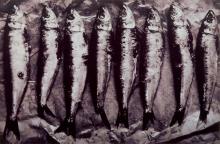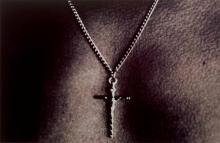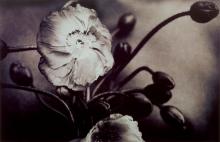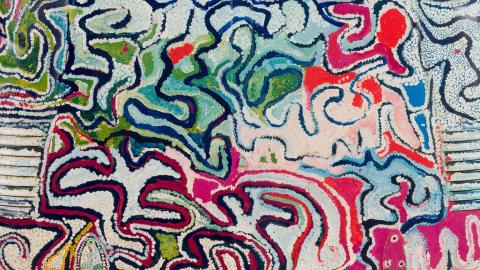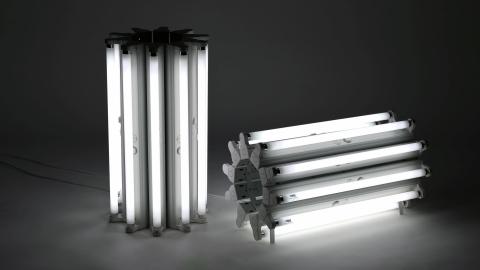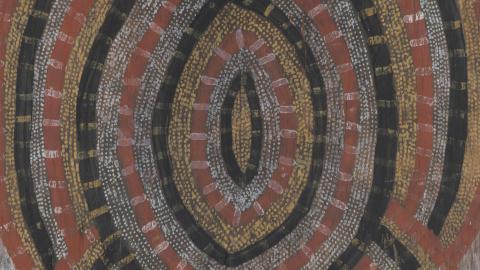Michael Riley: Sacrifice and cloud (portfolio)
In Sacrifice (portfolio) 1993, Wiradjuri/Kamilaroi artist Michael Riley (1960–2004) mines the reservoir of Christian iconography to proffer an allegory of Indigenous sacrifice under colonisation.
During colonisation, Christian organisations exerted control over Indigenous peoples by establishing reserves and missions. Many Indigenous peoples were forcibly relocated to these missions and forbidden from speaking their language and participating in cultural practices. Having grown on up on the Talbragar Reserve just outside of Dubbo, NSW, Riley witnessed the sacrifices Indigenous peoples had to make to survive and to be Christian themselves.
In this series, images of crosses, fish, lilies, and stigmata, function not only as Christian symbols, but as symbols that narrate such sacrifice. Riley intended not to disparage Christianity as a practice, but to critically examine how it was weaponised.
In cloud (portfolio) 2000, we see a progression of the images and themes produced in the earlier Sacrifice (portfolio). However, the iconic images this time are delivered in colour, in the new medium of inkjet prints on paper. The work presents us with images drawn from the opposing dichotomies of Indigenous and European settler societies. We see surrealistic images of animals and objects floating across a blue sky: a cow, a locust, a boomerang, a bible, a feather, a gravestone, a disembodied bird's wing. Crucially, this work alludes to Indigenous spiritual belief systems in the form of the winged messenger, represented here by the image of the locust (or gawuurra in the Wiradjuri language).

A detail view of Michael Riley’s cloud (portfolio) works installed for ‘Transitions’, GOMA, March 2023 / © Estate of Michael Riley / Photograph: M Campbell, QAGOMA

Sacrifice (portfolio) 1993
- RILEY, Michael - Creator

cloud (portfolio) 2000
- RILEY, Michael - Creator
